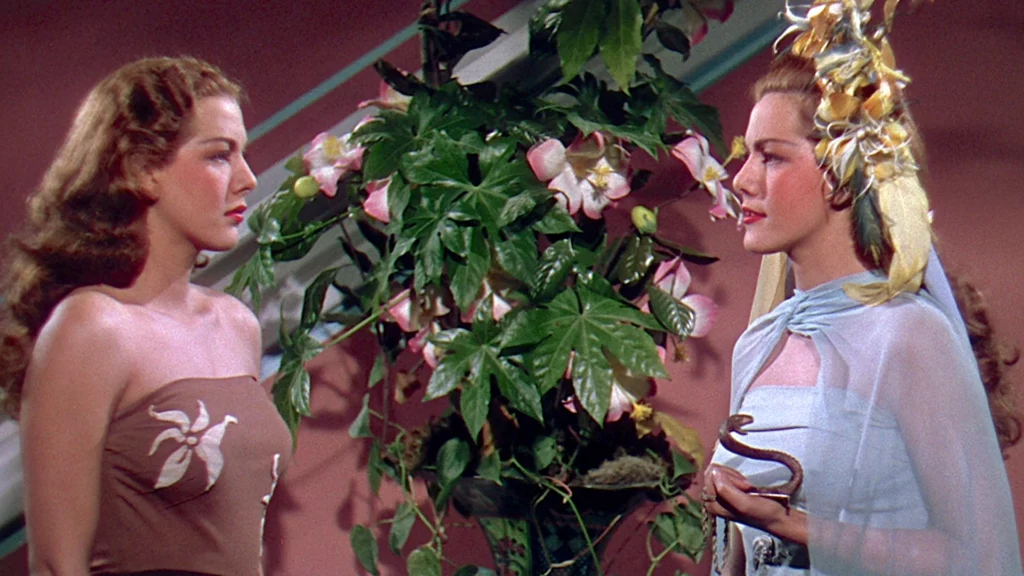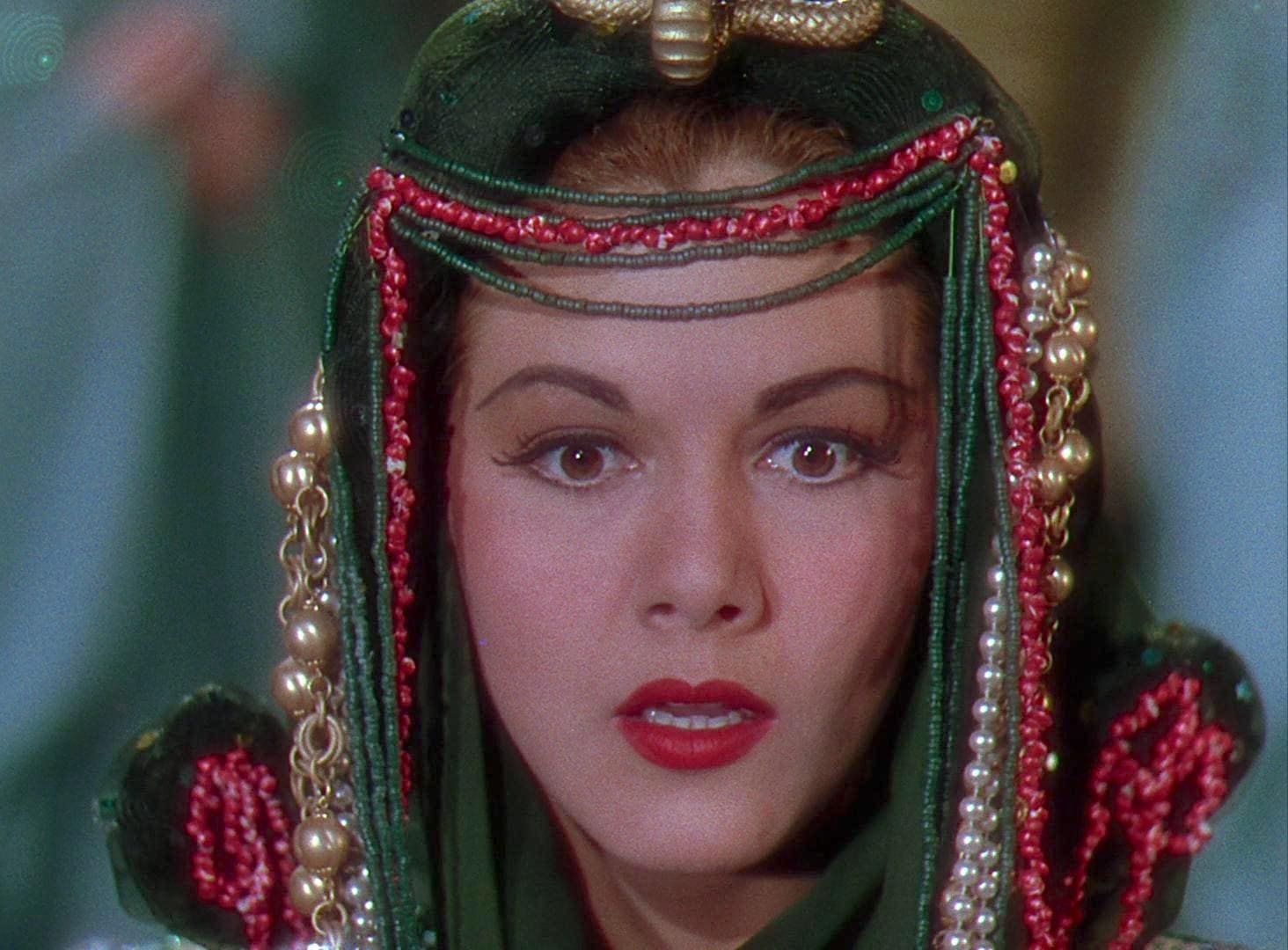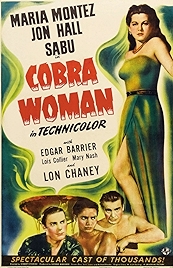She couldn’t act, couldn’t sing and danced like a wardrobe but for a while Maria Montez was quite the thing. Cobra Woman is probably the best example of a string of successful movies she made in the 1940s, often with the likeable, four-square Jon Hall as her romantic co-lead, all of them exotic, bright, colourful affairs, pantomime without the comedy.
Montez, real name Maria Africa Antonia Gracia Vidal de Santo Silas, was born in the Dominican Republic to Spanish parents and while her star was high played the dusky princess, queen or slave girl in films like Gypsy Wildcat, Sudan, Ali Baba and the Forty Thieves, White Captive and Arabian Nights.
Here she’s the normal everyday girl about to marry her sweetheart Ramu (Hall) in some never-specified tropical paradise who is suddenly kidnapped and whisked off to Cobra Island. Tollea (Montez) does not know that she is really its missing rightful ruler, and that her grandmother (Mary Nash), fearing for the realm, has organised the kidnap, hoping Tollea will assume her duties and save Cobra Island and its people from Tollea’s cruel twin sister Naja (also played by Montez).
Ramu heads off to rescue her, accompanied by his cheeky sidekick Kado (played by boy star Sabu, here about 20) and his sarong-wearing pet chimpanzee Koko, who will prove decisive when the chips are down.
It’s one of those islands beloved of Hollywood, where gods need to be placated, superstition is rife and the populace is held in check by demonstrations of the cobra dance, performed by Naja, which not only mesmerises King Cobra, the snake deity they all worship, but keeps Fire Mountain, an active volcano, on a low simmer rather than a fast boil.

This is a camp cult classic for a reason, and Montez brings commitment and charisma but not much else to a performance that’s about as dead flat as they come. She has good breasts, and looks good in the tight costumes Naja’s decked out in, as do Naja’s various handmaidens and also eventually Tollea when she steps up to take on and eventually triumph over her bad sister (surely no spoiler).
Colour is what you get with Cobra Woman, giant headdresses, viziers (or whatever they’re called) in turbans, guards with halberds, people who speak broken English (“all stranger get killed” Ramu is told when he arrives on the island to save Tollea and is promptly taken prisoner), gaudy Hollywood set dressing where lime green and puce, orange and purple all vie for the camera’s attention.
It’s shot in Technicolor, which provides a a good chunk of its charm, and is directed by Robert Siodmak, at this point still in the warm-up stage of his career. He would uncomplainingly take any gig until The Killers changed his fortunes two years after this, but he had quite a lot of affection for Montez, who, he said, “couldn’t act from here to there… but completely believed in her roles.”
That is the key to the movie. It’s kitsch, camp, whatever, shlock even, but everyone takes it seriously, including Siodmak. There’s even some Freudian subtext for those looking for phallic cobras and vulval volcanoes. Or a patriarchal tussle on this island ruled by women if looked at another way.
Hall is a dashing lead, Sabu is the likeable sidekick (when he’s not leaping about athletically he gets most of what little comedy there is and handles it well) and Siodmak engineers things so that Montez doesn’t have to carry too many scenes.
It’s hard to dislike in other words. “Silly but fun,” was Siodmark’s bullseye verdict, an entertaining movie designed to cheer up wartime audiences and done with a light touch. In many ways Cobra Woman and its dressed-for-the-harem ilk were the template for Raiders of the Lost Ark and their spinoffs. Indiana Jones, meet your mama.
Cobra Woman – Watch it/buy it at Amazon
I am an Amazon affiliate
© Steve Morrissey 2024

